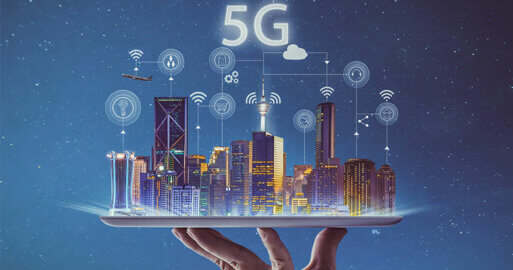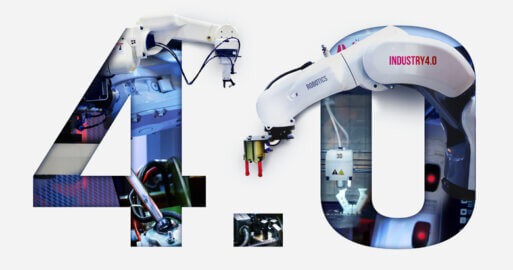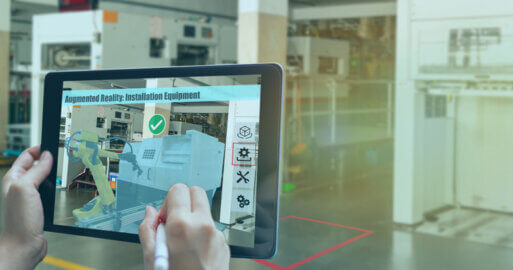Edge Computing and Cloud Computing in Comparison

In 2022, the global cloud computing industry had a market size of $480.04 billion. In research by the same company, Zippia, it was estimated that 94% of companies use cloud services, and 67% of corporate IT infrastructure is now cloud-based. If that weren’t impressive enough, cloud computing is still growing at an impressive rate – the global cloud computing market is expected to be worth 947.3 billion by 2026, with 175 zettabytes of data stored in a cloud by 2025.
Cloud computing is undeniably here to stay. However, there is also significant simultaneous growth in a completely different type of computing, some would say the diametric opposite to the mighty cloud. This is edge computing.
Valued at USD 11.24 billion in 2022, the global edge computing market is expected to expand at a compound annual growth rate (CAGR) of 37.9% from 2023 to 2030. This is twice the CAGR of the cloud computing market.
In this blog, we’ll be looking closer at what is actually going on. We’ll define cloud computing and define edge computing. We’ll be answering the question of what are the advantages of edge computing over cloud computing – and vice versa? Is it really a case of edge computing versus cloud computing, or do they complement each other?
What is cloud computing?
In simple terms, cloud computing is a technology model that enables users to access and use computing resources, like servers, storage, databases, networks and software, over the internet. These resources are provided and managed by cloud service providers in data centers.
Cloud computing offers a more flexible and scalable approach than the traditional on-premises model of owning and managing physical hardware and software. Instead of investing in and maintaining your own data center infrastructure, you rent resources from a cloud provider, often on a pay-as-you-go basis.
Whether an organization needs high storage and processing power to crunch big data, or is a start-up wishing to access high-quality resources without the critical mass or finances to justify their own physical infrastructure, cloud computing lets companies access the computing resources they need with just an internet connection.
Cloud computing versus on-premises
A huge argument for employing cloud infrastructure instead of on-premises is that companies can leverage the expertise and economies of scale of a cloud provider for greater security and better business continuity than is feasible on-premises. A look at the (growing) scale of security issues and the associated threat to infrastructure shows why companies would want to do this. In the 2022 Lenovo Global Study of CIOs, 66% of the interviewees cited cybersecurity, ransomware and data privacy as their biggest headaches. Even back in October 2021, Check Point Research (CPR) recorded 50% more attacks per week on corporate networks compared to 2020. This peaked at 925 cyber attacks a week per organization, with 1 out of every 61 organizations worldwide actually impacted by ransomware each week.
Centralized data centers house an immense amount of computing power, storage, and networking resources, all accessible over the internet. Businesses can effortlessly scale their operations up or down in response to changing demands, without needing to purchase, install, and manage additional hardware.
These budgetary concerns are also a reason why companies are flocking in droves to cloud computing. The quality of hardware affects the speed of the software running on it, as well as the number of users able to access the resources simultaneously. Hardware therefore needs replacing at ever increasing intervals. There’s also a shortage of skilled IT workers on the open market, making good employees costly to recruit and retain. Indeed, the favourable market conditions for IT professionals led to the shocking statistic in the Robert Half 2023 Salary Guide that 72% of tech workers in the US have considered changing jobs, and 52% admit to considering quitting at least once per month, in both cases for higher compensation.
What is edge computing?
In edge computing, data is not sent to a centralized location for processing. Instead, data is processed close to where it was created, on an edge device or even an edge server. The main advantage of this is that it reduces latency. In an autonomous car, for example, the constant stream of data flowing from the many sensors needs to be processed in real time. By the time data suggesting there’s a person in front of the car had been sent to and from a cloud-based processor, that information would arrive too late to stop a nasty road accident.
Edge computing is like having a mini-brain right where the action is, instead of relying on a central brain somewhere else. Instead of sending all the data to a distant cloud or data center, edge computing processes data closer to where it’s generated—right at the “edge” of the network. It’s like cutting out the middleman and getting things done faster and more efficiently. This is especially handy for devices that need real-time processing, like smart devices or sensors.
Processing data close to the source is an upstream application of edge computing. However, edge computing is also used the other way around, in downstream applications. A downstream application of edge computing involves storing or caching data near where it is going to be used. This edge storage reduces latency for the users accessing this data.
What are some examples of an edge device?
An edge device could be a small device like a Raspberry Pi or a wearable medical device. Many smart watches are already mini edge devices, with more heading in that direction. However, an edge device doesn’t have to be small. It could be a server in a data center. The key is that the device is physically a lot closer to the data source than in a cloud computing data center.
What are the advantages of edge computing?
Edge computing really comes into its own if there isn’t a reliable internet connection to access processing power and other resources. In smart farming, for example, sensors collect data on the soil, environment, crops, and the tractor itself to determine how best to carry out the job in hand. Edge devices on the tractors themselves are used for processing as internet access tends not to be particularly reliable in a rural field. Agriculture also uses drones with inbuilt processing power to gather and analyse crop and field conditions and send this information to automated hydration devices. Again, these flying edge devices are employed to avoid the latency of a cellular network.
Edge computing versus cloud computing: rivals or friends?
Although edge computing and cloud computing might appear to be complete opposites, there is actually quite considerable interplay between the paradigms. This is known as fog computing.
What is fog computing?
Fog computing is a hybrid of edge computing and cloud computing. It’s a distributed network able to use the best of both infrastructures as required. This can be seen for example in the manufacturing world. Manufacturing plants are filled with sensors monitoring and tracking the performance and condition of each asset and their environment, such as temperature, humidity, and more. Edge devices and edge servers allow these sensors to process data locally, providing real-time insights into the production process. If a machine shows signs of wear or a parameter goes out of bounds, the edge layer can trigger an immediate response, reducing downtime and preventing costly breakdowns.
This same data is used in predictive maintenance. However, this time the data collected from the IIoT sensors is stored and analysed in the cloud. Instead of waiting for a machine to fail, the system uses this data to predict when maintenance is needed based on performance trends. This proactive approach minimizes unplanned downtime and extends the lifespan of equipment.
What are some examples of fog computing?
There are many applications which follow the above pattern of coupling edge processing with centralized cloud-based processing.
In the agriculture drone example above, information gathered on crops, field conditions and hydration is later sent to a cloud-based system to help scientists work out a better hydration/ fertilization programme. There are also interesting projects leveraging 5G to do the same in other areas of smart farming.
We have also looked above at how data from autonomous cars is processed on edge devices to enable the vehicle to respond to an immediate need. However, once that need has passed, the wealth of data is sent into the cloud and this mass of big data crunched and used for training new simulation models for the edge devices in the vehicle.
Hardware management in edge computing
Sometimes, the decision to use a hybrid of edge computing and cloud computing infrastructures is more pragmatic than in the use cases above. The firmware on the edge devices needs regular updates and security patches, which of course are sent from a cloud.
Is data storage better on a cloud infrastructure or an edge device?
When deciding if it is better to store data on a cloud infrastructure or directly on an edge device, one consideration is how and when you wish to access this information. If the data will be needed by the edge processer again, storing the data directly on the edge device significantly reduces latency. Edge devices often operate in environments with intermittent connectivity and variable or low-bandwidth network connections, resulting in significant latency when synchronizing data with a cloud.
Inconsistent connectivity can lead to data synchronization failures, potential data loss, or outdated information in the cloud.
It’s also worth remembering that in a cloud model, you pay for the space you use, whereas an edge device is a sunk cost. This may be another reason why you decide it would be more economically viable to store data on the edge device itself. Edge devices may generate significant amounts of data, and transferring all of it to the cloud in real-time can be resource-intensive.
Dealing with business continuity and disaster recovery (BCDR) in edge computing
However, if you choose to store data on an edge device, what happens if the device fails? What happens if the device is stolen? While you can encrypt and otherwise secure the data on an edge device, this doesn’t help you if you need to access and use the data again. Therefore, it really does makes sense to upload the data to the cloud at certain intervals. Cloud providers have robust techniques in place, from assuring the continued redundancy, hygiene and maintenance of hardware to active-active clustering and digital twins to ensure data remains accessible whatever disaster may befall.
There is, of course, infinitely more space available on a cloud, while edge devices often have limited storage, processing power, and energy resources.
Data management when syncing between an edge device and a cloud.
Although transferring data to a cloud for storage is extremely beneficial for data continuity, this requires policies and conflict resolution methods in place to ensure that you are not unnecessarily replicating files. You need to define your single source of truth and to track changes made to it. This may involve methods such as using timestamps, versioning (where each update is assigned a unique identifier), defining merge strategies or assigning consensus algorithms. Conflict-Free Replicated Data Types (CRDTs) are complex yet effective ways of guaranteeing data integrity by making, updating and evaluating data replicas.
Security when syncing between an edge device and a cloud
Data which is synced between an edge device and a cloud needs to be encrypted in flight and at rest to ensure that it doesn’t fall into the wrong hands. Unsecured data transfers can lead to data breaches, unauthorized access, or man-in-the-middle attacks, compromising the confidentiality and integrity of the synchronized data. Important strategies include mutual authentication between device and cloud, and access controls. These can be implemented and monitored with good API management software or real-time monitoring and management tools for other data transfer methods, such as those inbuilt in the SEEBURGER BIS Platform.
Edge computing vs. cloud computing vs. fog computing
Edge computing is a powerful solution to address the need for reduced latency and real-time reactions in the ever-expanding realm of data-driven applications. By processing or storing data in close proximity to its source, edge computing enables rapid decision-making and responsiveness. In reality, rather than being a rival to cloud computing, the two paradigms often work in tandem, with both benefitting from the resulting synergies. Edge devices are responsible for time-sensitive processing. Once the immediate need has passed, the data can then be transferred to a cloud for deeper analytics, maybe via a cloud-based data lake. This interplay is known as fog computing.
However, this collaboration brings challenges in security and data management. Syncing between edge devices and the cloud needs strong policies to protect sensitive information, ensuring data integrity and confidentiality.
How can SEEBURGER help?
Edge computing is an established but ever-changing field, adapting to technological advances. It has a crucial role in real-time processing and collaborating with cloud computing. As industries tap into the potential of Industrial IoT and AI, the partnership between edge and cloud computing becomes not just important but a dynamic force shaping the future of data-driven systems. This should be addressed from the beginning with a comprehensive integration strategy, underpinned by a high-performance integration platform with inbuilt monitoring, data security and governance capabilities.
SEEBURGER is investing heavily in research and innovation to stay at the forefront of this rapidly evolving field. We would be delighted to discuss your integration strategy for your IIoT business needs.
Why SEEBURGER
One central platform, one experience, all integrations, all deployment models. Our BIS Platform enables seamless connectivity of applications, people and processes, whether in the cloud, a hybrid environment or on-premises. With the BIS Platform, anyone can design simple to complex integrations on their own, helping to strengthen their company’s digital ecosystem.
SEEBURGER is an integration service and software provider. Family-owned since 1986, today over 1,200 employees worldwide make us strong. Over 14,000 customers rely on integration expertise from SEEBURGER every day.
The SEEBURGER BIS Platform is your foundation for agile integration that realizes the full business value of Industry 4.0 technology. The Industrial Internet of Things (IIoT) offers enormous potential for greater productivity, process reliability and rapid innovation.
1. Vgl. 25 Amazing Cloud Adoption Statistics [2023]: Cloud Migration, Computing, And More – Zippia
2. Vgl. Edge Computing Market Size, Share & Growth Report, 2030 (grandviewresearch.com)
3. Vgl. Edge Computing Market Size, Share & Growth Report, 2030 (grandviewresearch.com)
4. Vgl. 2024 Salary Guide | Robert Half (accessed October 4 2023)
Thank you for your message
We appreciate your interest in SEEBURGER
Get in contact with us:
Please enter details about your project in the message section so we can direct your inquiry to the right consultant.
Written by: Melissa Kuhnert
Originally from the UK, Melissa Kuhnert joined the writing and editorial team at SEEBURGER at the end of 2020. With degrees in language and business, and a long interest in technology and effective communication, Melissa spends much of her time at SEEBURGER translating and creating blog posts for our English-language readers. Before joining SEEBURGER, she enjoyed a long career offering tailored, in-house English language training to corporate clients in mainly technical industries, and quite a lot of writing and translation. She estimates that she has taught in over 100 different companies, 5 universities, and toured so many clients’ production facilities, she owns her own steel-capped boots and safety glasses. Outside of work, Melissa enjoys exploring Germany, reading, watching British comedies, and firmly believes that a pun is its own reword.





